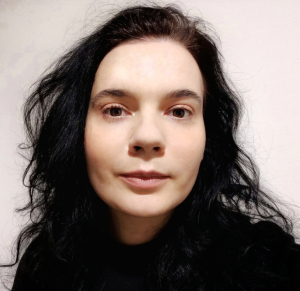Assistant Professor and Faculty Fellow at the Center for Data Science, NYU

Hi!
My research answers how machine learning can be applied to explain and predict political behavior at scale. I develop classification tools that integrate experimentation, eye-tracking, and deep learning to study how stable societal divisions shape political decisions. This work aims both to deepen our understanding of these dynamics and to improve predictive accuracy in political science, with particular emphasis on the United States and the post-Soviet region.
I see my research as situated primarily within the following fields:
- Computational Political Behavior (
CPB) - Political Communication (
PC) - American Politics (
AP)
I plan/hope [insert degree of uncertainty here] to be on the job market in 2025-26.
I am currently working on:
- Vision and Division: Political Leanings Shape Visual Attention and Attitudes
Toward Political Imagery. (with Olga Gasparyan)(
AP) (CPB) (JMP-2)
In a large-scale eye-tracking study, we show how motivated visual processing reinforces and potentially deepens partisan divides.
- Media Choice and Audience Perceptions: Evidence from
Visual Framing of Immigration in News Stories. (with Olga Gasparyan) (
AP) (PC) (CPB) accepted in PLOS ONE
We explore how media outlets from different ideological perspectives visually frame a polarizing issue, immigration, and how their target audiences are likely to interpret these frames. We illustrate yet again that media bias is important to study, but this time from the perspective of a visual slant.
- When Picture is not Complete: Decoding Visual Sentiment of Political Imagery. (with Olga Gasparyan) (
AP) (CPB)
We highlight a key limitation in studies that use large-scale approaches to tackle current challenges in visual sentiment analysis. In addition to demonstrating that certain biases cannot be fully addressed, we offer a guide on how to move forward.
- Sounds About Right: Exploring the Audio Dramaturgy of Political Propaganda (
CPB) (PC) (JMP-1)
I introduce the concept of audio dramaturgy in propaganda as the recurring organization of auditory features—such as voice, conversation rhythm, and speaking dynamics—which frames political narratives by consistently pairing specific topics with distinct auditory cues.
Analyzing around ten thousand manually extracted and computationally coded audio segments across four hundred hours of content from Russia's leading political talk show, I identify dramaturgical patterns that have underpinned a decade of anti-Ukraine propaganda. I then reconstruct these patterns in synthetic audio passages and, through a survey experiment, examine the mechanisms driving their persuasiveness, likability, and memorability. These findings highlight the role of audio dramaturgy in embedding propaganda narratives into public consciousness and, while centered on Russian propaganda, provide broader insights into how controlled media use orchestrated audio markers for persuasion.To explain why citizens support or oppose dictatorial leadership, most approaches to studying political behavior and public opinion in autocracies focus on mass explicit preferences. I show that implicit preferences - people's gut attitudes about politics - represent a significant and yet understudied source of citizens' disruptive preferences against the regime and in support of dictators' opponents.
The rest is in my CV.
Publications
Articles
- How Biased Media Generate Support for the Ruling Authorities: Causal Mediation Analysis of Evidence from Russia. European Journal of Communication. 2020. Vol.36. N.2. P.183-200. (
PC) (CPP) - When the Party’s Over: Political Blame Attribution under an Electoral Authoritarian Regime. Post-Soviet Affairs. 2020. Vol.36. N.1. P.36-60. (with Margarita Zavadskaya) (
CPP) - A Top-down Movement with Grass-Roots Effects? Alexei Navalny’s Electoral Campaign.
Social Movement Studies. 2018. Vol.17. N.5. P.618-625. (with Jan Dollbaum and Andrei Semenov) (
CPP)
Book chapters
- Active Urbanites in an Authoritarian Regime. In: Regina Smyth, Jeremy Morris, Andrei Semenov (eds.): Urban Activism in Contemporary Russia, Bloomington: Indiana University Press. (with Jan Dollbaum and Andrei Semenov), 2023. (
CPP) - Varieties of Russian Activism: State-society Contestation in Everyday Life. Katie Stewart, Madeline McCann, Carola Neugebauer, Irina Shevtsova, Daniela Zupan, Irina Meyer-Olimpieva, Katherine Hitchcock, John P Burgess, Anna Zhelnina, Anna A Dekalchuk, Ivan S Grigoriev, Eleonora Minaeva, Jan Matti Dollbaum, Guzel Yusupova, Elena Sirotkina. Indiana University Press, 2023. (
CPP)
(C) Elena Sirotkina | Assistant Professor / Faculty Fellow at CDS, NYU